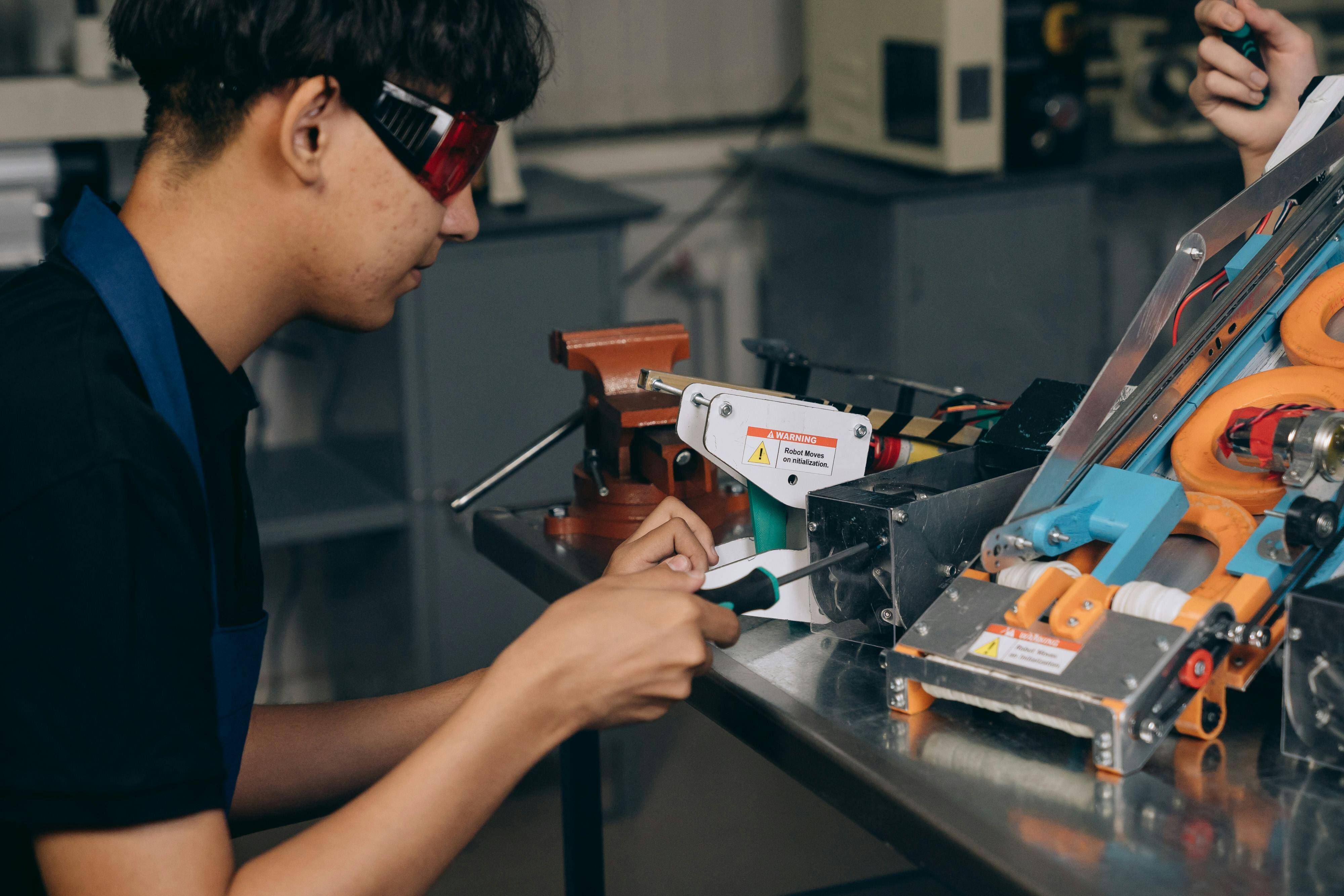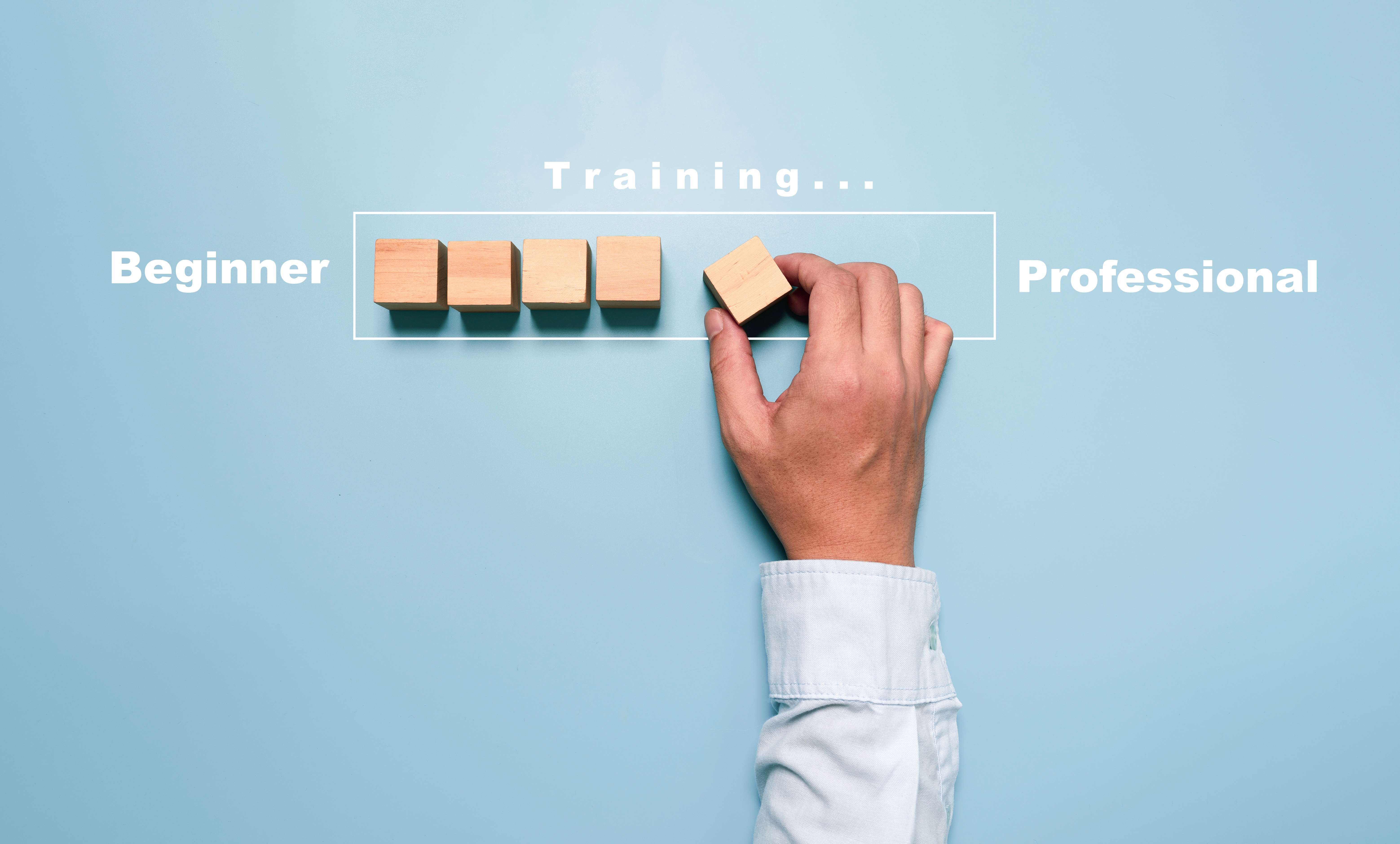For a long time, traditional methods based on lectures or theoretical aids have predominated. However, they struggle to captivate learners or guarantee effective application of the skills acquired.
Faced with these challenges, experiential learning is emerging as an essential solution. By placing learners in realistic, interactive situations, this approach relies on active pedagogy, supported by innovative technological tools such as virtual reality (VR) and augmented reality (AR). These immersive tools don't just make training more engaging: they revolutionize the way skills are learned, applied and retained over the long term.
In this article we'll explore how experiential learning is redefining training practices, what its applications are in vocational training, its benefits for companies and employees, as well as its constraints.
Understanding experiential learning and its fundamental principles
Experiential learning is based on an active approach: learners are immersed in concrete situations where they can experiment, interact and make decisions. This method is based on the premise that “you retain better what you experience”.
Although the concept took coherent theoretical form in 1984 with the work of David A. Kolb, its origins can be traced back to major figures in education and psychology, such as John Dewey, Kurt Lewin and Jean Piaget. Each contributed key elements to this learning method, emphasizing the central role of experience in the development of knowledge.
A. Historical and philosophical roots
The very idea of experiential learning is not new. Traces of it can be found as far back as antiquity, notably in the teachings of Confucius, who declared:
“Tell me, and I will forget. Show me, and I may remember. Involve me, and I'll understand.
This perspective, dating from 450 BC, underlines the importance of active involvement in the learning process. At the end of the 20th century, David Kolb formalized this approach by introducing the experiential learning cycle, a four-stage model:
.png?width=1200&length=1200&name=BLOG%20-%20cartes%20%20(7).png)
This methodology, now widely adopted, is particularly relevant to the development of professional skills in dynamic environments.
B. Why is this approach so effective?
It relies on powerful cognitive and emotional mechanisms:
.png?width=1200&length=1200&name=BLOG%20-%20cartes%20%20(8).png)
Immersive technologies, such as VR and AR, amplify these principles by recreating environments where the learner can experience something almost identical to reality.
Experiential learning for vocational training
A. Transforming teaching methods
Experiential learning redefines the way we learn by placing individuals in real or simulated situations. This model encourages error as a learning tool and values reflection on action. For example, situational exercises help develop specific skills without the risks associated with traditional professional contexts. This approach favors pedagogical flexibility, making training adaptable to the needs of both learners and companies.

B. A tool to meet the challenges of the 20th century
In a world of rapidly evolving skills, experiential learning offers an answer to the growing challenges facing organizations:
.png?width=1200&length=1200&name=BLOG%20-%20cartes%20%20(9).png)
C. An innovation lever for organizations
Experiential learning helps to boost corporate competitiveness by accelerating skills development. It enables employees to simulate professional contexts, experiment with concrete solutions and improve key behavioral skills, such as collaboration and problem-solving.
Concrete benefits for companies and employees
A. Strategic benefits for companies
- Improved productivity: Employees who learn by experimenting with practical cases become operational more quickly, reducing the time needed to master key skills.
- Enhanced innovation: Companies using experiential approaches foster the emergence of creative solutions, as learners are encouraged to think and solve problems in realistic contexts.
- Talent attraction and retention: Offering enriching and engaging training positions the company as an innovative employer, attracting the best talent and strengthening the attachment of existing employees.
.png?width=1200&length=1200&name=BLOG%20-%20cartes%20%20(6).png)
B. For employees: an enriched learning experience
- Increased commitment: Experimentation makes learning concrete and stimulating, which reinforces the active participation of learners.
- Rapid acquisition of skills: By practicing in real-life conditions, employees develop their confidence and autonomy through intensive, safe practice, enabling them to acquire complete mastery of skills and technical gestures.
- Development of soft skills: Experiential learning encourages the development of behavioral skills such as collaboration, problem-solving and stress management.

Some concrete examples applied to the business world
Example 1:
A marketing intern is asked to design a real campaign for a product, from market analysis to the proposal of creative solutions. He benefits from feedback from his colleagues and the tangible results of the campaign to draw lessons that he can reuse in other projects. This practical experience also enables him to apply the theoretical concepts he has learned.
Example 2:
A human resources employee takes part in a difficult interview simulation. In this scenario, he has to manage a delicate discussion with a fictitious employee who is underperforming. After the simulation, the employee receives detailed feedback on his communication, choices and reactions. He then analyzes this feedback, identifies areas for improvement and applies these learnings to similar real-life situations in his job.

Example 3:
In a fast-food company, new managers are trained through practical exercises in real-life situations. For example, they have to supervise a service for an hour, managing teams, customer flows and any unforeseen events, such as stock shortages or staff absences. After each session, a debriefing is organized to analyze their decisions and discuss areas for improvement. This approach enables them to rapidly acquire managerial skills by experimenting directly in the field.
The constraints of experiential learning in training
A. Applicability limited to certain contexts
As Kolb's model highlights, not all situations allow us to start directly with hands-on experience. For example, in high-risk sectors, such as the handling of hazardous products or the training of operators of complex machinery, starting with direct practical experience could have serious consequences. In such cases, prior theoretical input or demonstrations are necessary to prepare learners before confronting them with real-life situations.
B. The need for a multimodal approach
Experiential learning, while effective, cannot always stand alone. To maximize its impact, it is often essential to alternate between real-life situations, theoretical input and structured reflection phases. For example, a learner exploring a new working method may need a theoretical framework beforehand to understand the key concepts, or a discussion afterwards to analyze the results.
C. Longer learning curve
The experiential approach is an iterative process: learners experiment, analyze, conceptualize and put new ideas into practice. This cycle, while essential for transforming knowledge into solid skills, can be more time-consuming than more traditional learning methods. This time constraint can pose problems in contexts where resources or deadlines are limited.
Overcoming limits with immersive tools
The constraints of experiential learning, while real, are not insurmountable. Immersive tools such as virtual reality (VR) make it possible to overcome these challenges.
For example, in high-risk sectors where direct application could have serious consequences, immersive environments offer a safe alternative. They enable us to recreate complex scenarios, such as handling dangerous products or operating machinery, without endangering learners or equipment.

What's more, these tools fit perfectly into a multimodal approach, providing concrete experiences while respecting the necessary stages of theoretical acquisition and reflection. VR also shortens learning cycles, offering instant feedback and personalized repetition, while maintaining a high level of engagement.
So, far from replacing experiential learning, immersive technologies enhance its effectiveness and make it accessible in contexts where it would otherwise be limited. These solutions pave the way for more adaptable, inclusive and effective training, meeting the demands of an ever-changing professional environment.
Conclusion
Experiential learning represents a real lever for innovation in vocational training, by emphasizing the active involvement of learners in real-life situations. This approach overcomes the limitations of traditional methods, facilitating better knowledge retention and direct application of acquired skills. By encouraging commitment, learning by doing and emotion, it prepares employees to face the challenges of the professional world with greater autonomy and confidence.
Although it sometimes requires time to adapt and a multimodal approach to be fully effective, experiential learning offers undeniable advantages for companies. It meets the need for adaptability, attractiveness and competitiveness, while contributing to employee fulfillment. By relying on this method, organizations can truly transform their training practices and accelerate the development of key skills, for a more dynamic, high-performance professional future.




